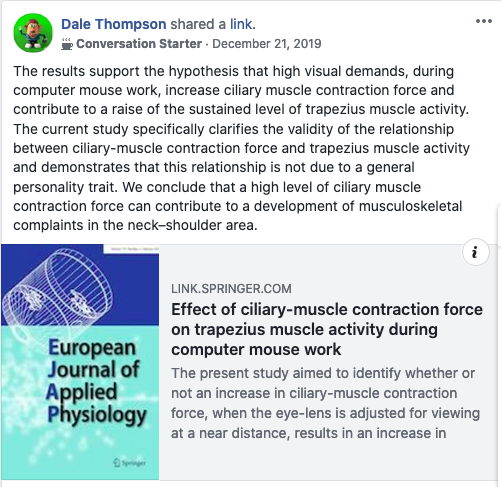Effect of ciliary-muscle contraction force on trapezius muscle activity during computer mouse work The current study confirmed earlier findings and showed that sustained levels of ciliary-muscle contraction force, during free gaze conditions and concurrent hand/arm movements, correlate with trapezius muscle activation levels across individuals. By disproving the notion that a personal trait drives the eye–neck correlation, this study extends the knowledge of and provides insight into the underlying mechanisms that link the eyes with the neck. The current results suggest that a ciliary-muscle contraction force above a critical threshold level is required to observe this correlation. By use of an occupationally relevant approach (i.e., computer mouse work) the results from this study can be generalized to a wider range of occupational settings than that reported previously.

#science #chiropractor #chiropractic #research #education #evidence based #patient centered #interprofessional #collaborative #rehabilitation #public health #spinal health #musculoskeletal health #ethics #pain #function #disability #QOL #knowledgetranslation


